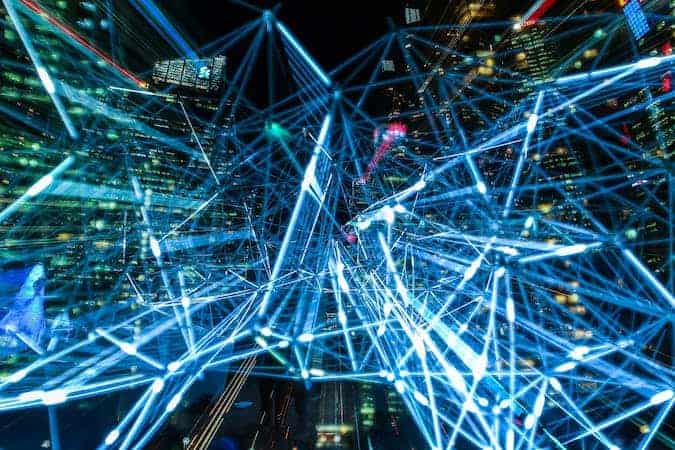Smart cities are the latest development in urbanistic technologies and can be described as cities that use a mix of available information from multiple sensors.
Synchronized with real-time operations, they can make the life of a citizen much more efficient, easy and pleasant.
How do smart cities improve the citizen’s way of life?
Public Transportation
One of the elements where the impact of smart cities can be more drastic is in public transportation.
The possibility to provide a control system where integrated pre-installed cameras can automatically detect violations and transmit information to authorities enhances the security of the transportation system.
It also makes it possible for the user to track transportation in real-time through geolocation. Public transport stops can also be part of the smart city system by equipping them with ticket machines that include touch screens for route planning.
Traffic System
Another element where smart technologies can improve the flow of a city is related to the traffic light system.
By entering real-time data based on the number of cars per street, the smart city can find the most optimum way to adjust timing in the traffic lights that helps to release congestion in most important streets or highways.
Wi-Fi Network
In a smart city, the citizens can connect themselves to available Wi-Fi city networks that allow them to always stay connected and share experiences while at the same time be aware of emergency notifications that the city’s network sends to mobile phones.
Energy and Water Management
With the development of smart homes, smart cities will eventually become a large network of interconnected smart homes.
This connectivity will allow government entities to control operational devices such as power inverters (in case of a private photovoltaic system) in order to control energy flows in the smart grid of the city.
This will avoid the congestion of the power grid and allows efficient energy use from independent power producers.
The presence of renewable energy systems becomes important in a smart city as it reduces pollution and enhances energy security. Particularly, solar panels become an attractive asset that will allow users to generate their own source of energy.
Also, the presence of smart meters for water management facilities ensures adequate water consumption tracking, maintenance schemes and quality of potable water.
Eco-Friendly
A smart city might be integral in reducing air pollution while at the same time creating openair spaces with green areas such as playgrounds and parks, which reduce urban heat and enhance quality of life.
e-Governance
One of the most important elements of a smart city is the possibility to provide participation in decision-making and management to the citizens as well.
The idea is that citizens can get access to government services in a convenient, transparent and efficient manner.
Under this scenario any person can download a government app and fill in the required information to obtain subsidies, permits, grants or social assistance of any kind, this enhances government budgets and speeds up paperwork for both the entity and the user.
A system that could even allow electronic voting possible and a two-way communication system that allows the citizens to communicate directly with government entities via online.
What kind of data do they collect?
One of the elements that any smart city must have is the presence of available sensors from multiple devices in the streets and homes. Thanks to the Internet of Things (IoT) every device in a smart city will be able to emit a signal that the sensors distributed across the city will be able to collect and administrate.
This goes from waste management containers emitting signals for garbage trucks to collect when the container is full, to surveillance systems detecting criminals and alerting nearby authorities.
This is where recent technologies such as Big Data allow handling large volumes of data in a fast and organized way to develop the growth of a smart city.
The type of data that can be collected through sensors has no limit. Experiences in Nanjing, China, show how installing sensors in 10,000 taxis, 7,000 buses and 1 million cars provides the smart city network a massive amount of data.
This data consisting of vehicle locations and distributions over time allows to detect patterns and establish departure and arrival times. Other experiences in LA show how LED lights can be replaced efficiently as integrated sensors will inform local companies of bulb status.
Based on the source of the information, collected data can be classified into two groups: raw data and enhanced data. Raw data referring to environmental sensors (temperature, humidity, wind speed, solar radiation), surveillance systems, waste fill levels, and city records.
Meanwhile, enhanced data would be related to parking management, traffic conditions, energy usage, health monitoring devices, remote patient monitoring, and augmented reality.
What is the Best Smart City Example as of 2020?

If you want to see where the smart city technology trends are heading, then the place to look at is definitely London, UK.
The progress in this sector is already starting to face one of the major problems of the city: transportation. It is expected that by 2030, London’s population will increase by 1 million people, leading to a total 10 million people living in this city.
This number would definitely increase congestion and traffic as never before in the city, which is why one of the first innovations have already deployed.
This is referred to the Heathrow pod which can already be seen in the Heathrow Airport of the city and is a dynamic rapid and zero-emission transportation option that was launched in May 2011, becoming one of the best transport systems in the world.
More than that, London has also launched the most important aspect of a smart city, the London Datastore which is a free-open-access data platform that connects every citizen to every event that happens in the city. This provides from property prices to crime rates.
Conclusion
Smart cities will definitely become more common in the future as IoT and Big Data technologies keep evolving.
The hidden potential of this technology is yet to be fully explored, but the impact will improve the average life of the citizen in every aspect, from security, healthcare, and transportation, to energy consumption, water consumption, and also economic development.
This large potential will be achieved by using multiple sensors integrated into electronic devices that will send signals to be detected by the cities network to be gathered in a bank data that will translate this information into action through notifications or automatic functionalities.
Despite the positive advantages of these technologies, it is important to consider that an important threat related to cybersecurity appears in the scenario that makes data and operational systems vulnerable to cyberattacks.
Therefore, the implementation of reliable and strong cybersecurity systems is essential to successfully deploy the development of smart cities.
References
http://smartcities.gov.in/content/innerpage/smart-city-features.php
http://smartcities.gov.in/upload/uploadfiles/files/What%20is%20Smart%20City.pdf
https://medium.com/dataseries/big-data-and-smart-cities-why-we-need-them-now-a194b2498fb1
https://www.atis.org/smart-cities-data-sharing/smart-cities-data-sharing.pdf


